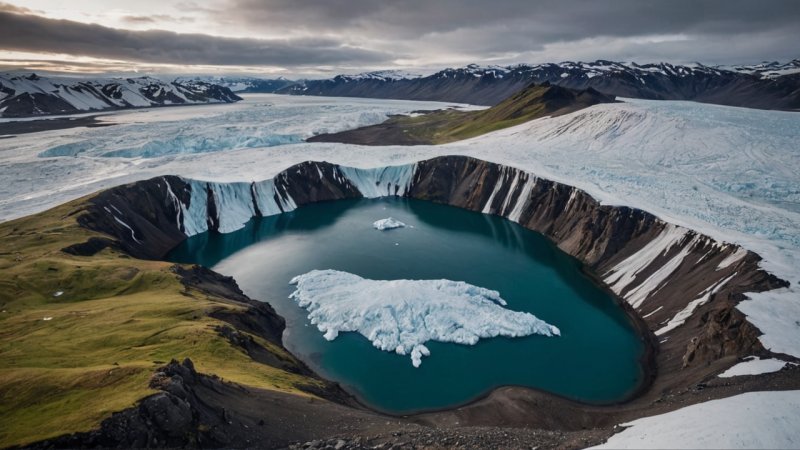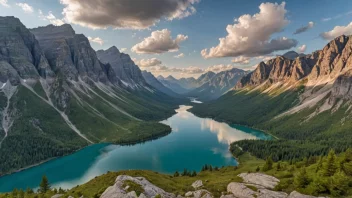When it comes to breathtaking landscapes and unique experiences, few places on Earth can rival Iceland and Greenland. Both destinations are known for their stunning natural beauty, rich cultural heritage, and opportunities for adventure. However, they offer distinct experiences that cater to different types of travelers. In this article, we will compare Iceland and Greenland, highlighting their key features, pros and cons, and what makes each destination unique.
Natural Landscapes
Iceland is famous for its dramatic landscapes, including volcanoes, geysers, hot springs, and waterfalls. The Golden Circle, a popular tourist route, showcases many of these natural wonders, such as the Þingvellir National Park, Gullfoss waterfall, and the Geysir geothermal area. On the other hand, Greenland is known for its vast ice sheets, towering glaciers, and rugged fjords. The Ilulissat Icefjord, a UNESCO World Heritage site, is a must-visit for those looking to witness the grandeur of icebergs calving into the sea.
Adventure Activities
Both Iceland and Greenland offer a plethora of adventure activities. In Iceland, visitors can indulge in activities like hiking on glaciers, exploring lava caves, and soaking in natural hot springs. The popularity of the Golden Circle and the South Coast makes these activities easily accessible. Conversely, Greenland is an adventurer's paradise for those seeking a more remote and rugged experience. Popular activities include dog sledding, kayaking among icebergs, and hiking in the Arctic wilderness. The opportunities for outdoor exploration are plentiful, but they often require more planning and preparation.
Cultural Experiences
Culture is another significant aspect to consider when comparing these two destinations. Iceland has a vibrant cultural scene, with numerous festivals, art galleries, and traditional music events. The capital city, Reykjavik, is known for its lively nightlife and culinary experiences. In contrast, Greenland’s culture is deeply rooted in Inuit traditions. Visitors can learn about the indigenous culture through museums, cultural centers, and interactions with local communities. While Iceland offers a more modern cultural experience, Greenland provides a glimpse into ancient ways of life.
Accessibility and Travel Infrastructure
Iceland is generally more accessible for travelers, thanks to its well-developed tourism infrastructure. The country has numerous flights connecting major cities and a range of accommodations to suit different budgets. The Ring Road encircles the island, making it easy to explore various attractions. In contrast, Greenland can be more challenging to navigate. Flights are limited, and many towns are only accessible by boat or helicopter. While this adds to its allure for adventurers, it may not be ideal for those seeking convenience.
Weather and Best Time to Visit
The weather varies significantly between the two destinations. Iceland has a relatively mild coastal climate, with summer temperatures ranging from 10°C to 15°C (50°F to 59°F) and winter temperatures often dropping below freezing. The best time to visit Iceland is during the summer months, when the days are longest and the weather is most favorable for outdoor activities. Greenland, however, has a more extreme climate, with colder temperatures and longer winters. The best time to visit Greenland is during the summer months, particularly from June to August, when the ice melts, making the landscape more accessible.
Cost Considerations
Traveling to Iceland tends to be more expensive than Greenland, primarily due to its popularity and well-established tourism industry. Accommodation, dining, and activities can add up quickly. However, many travelers find that the investment is worth it for the experiences and sights they gain. Greenland, while potentially less expensive in terms of accommodation, can incur high costs for flights and activities due to its remote nature. Travelers should budget accordingly, keeping in mind that experiences in Greenland may be more unique but come with additional logistical challenges.
Conclusion
In conclusion, both Iceland and Greenland offer incredible opportunities for adventure and exploration, but they cater to different types of travelers. Iceland is perfect for those who seek convenience, variety, and a vibrant cultural scene, while Greenland is ideal for adventurers looking for remote landscapes and a chance to connect with indigenous cultures. Ultimately, your choice will depend on the type of experience you desire. If you have the time and resources, consider visiting both destinations to appreciate the unique beauty each has to offer.






